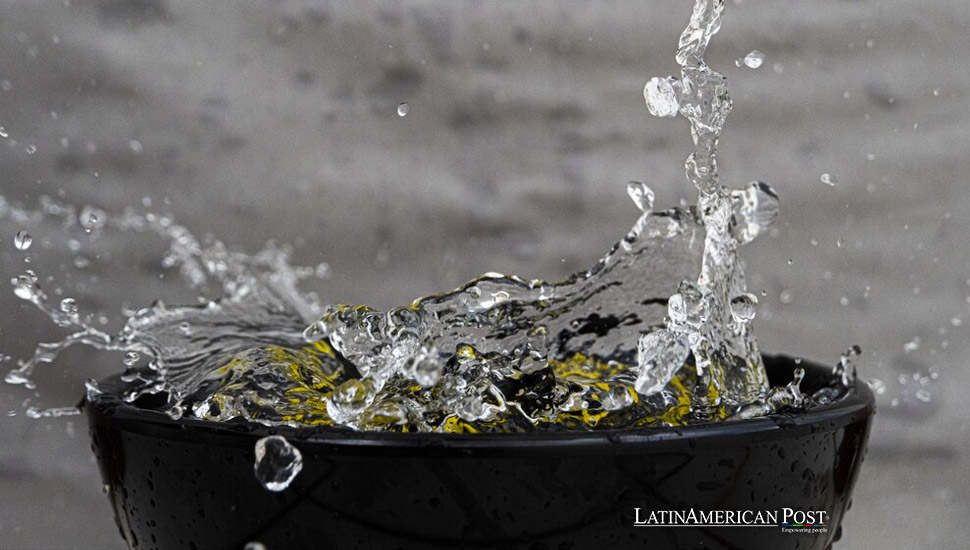The Role of women Water Harvesters in Mexico City in Combating Drought

Amidst prolonged drought and unreliable public water delivery, the women of Mexico City are pioneering rainwater harvesting solutions. Their efforts are crucial in the battle against water scarcity.
As Sonia Estefanía Palacios Díaz glided above her neighborhood in a cable car, she couldn’t help but notice the sea of blue and black water tanks, tubes, and cables. Her journey to becoming a rainwater harvesting advocate began with a simple fascination for these systems. ‘I’m always looking for different rainwater harvesting systems,’ she told the Associated Press (AP), her smile reflecting her passion. ‘I’m also always looking for places to install one.’
Pioneering Rainwater Harvesting
Driven by prolonged drought and inconsistent public water delivery, many Mexico City residents turn to rainwater. A pioneering company, Isla Urbana, which engages in nonprofit and for-profit work, has installed more than 40,000 rain catchment systems across Mexico since its founding 15 years ago. The Mexico City government has also invested in installing 70,000 systems since 2019. However, this is still a tiny fraction of a sprawling metropolis of around 9 million people. The challenge remains that there needs to be more education and more resources to maintain the systems after installation, a crucial aspect that the audience needs to be informed about.
Palacios Díaz and her fellow women of the Pixcatl cooperative, which translates to ‘harvest of water’ in the Indigenous Nahuatl language, are not deterred by the challenges. In lower-income areas like Iztapalapa, the group is committed to keeping systems functioning and educating residents on maintenance. Their unwavering dedication, evident in their efforts to brainstorm designs and provide low-cost options for additional materials, serves as an inspiration to all.
Palacios Díaz has lived with water scarcity in Iztapalapa for as long as she can remember. “Here, people will get in line starting at 3 in the morning to get water (from distribution trucks) up until 2 in the afternoon,” she recounted from her mother’s home. “There was a time in which we went for more than a month without a regular water supply,” she told AP. Earlier this year, the reservoirs that supply the capital were perilously low, prompting authorities to reduce water release. Consequently, neighborhoods unaccustomed to water scarcity faced a new reality.
Overcoming Obstacles and Innovating Solutions
Most of the country experienced moderate to severe drought as Mexico entered the rainy season. The nation depends on rains to fill the reservoirs, but the drought has left them so low that replenishment may take years. Amid this dire situation, many Mexicans, including Palacios Díaz, have turned to rainwater harvesting. During the height of the pandemic, she taught urban farming and water harvesting classes at a local community space. It wasn’t until her students expressed interest in learning how to install and understand their systems that she seriously considered taking a government course. After enrolling in a training program in 2022 to become an installer, she met other women from the city interested in water harvesting systems, leading to the formation of the Pixcatl cooperative.
Near the skirt of a volcano on the fringes of Iztapalapa, Lizbeth Esther Pineda Castro, another cooperative member, and Palacios Díaz adjusted a ladder to reach the roof of a small house. The two-story home, inherited by Sara Huitzil Morales and her niece, sits in Iztapalapa’s Buenavista neighborhood. In 2021, Huitzil’s mother qualified for a free water harvesting system from Mexico City’s government. After installation, Huitzil requested Pixcatl’s maintenance help since she wasn’t sure how to take care of the system.
Sporting their navy polos with the Pixcatl logo, Pineda and Palacios Díaz cleared debris off the roof to ensure the system only collected fresh rain. “We also add a little bit of soap and chlorine to clean the pipes,” said Palacios Díaz as she swept the liquid down a connecting tube leading to the harvesting system. Downstairs, they joined other cooperative members in a courtyard to inspect the giant 2,500-liter water tank, which can serve Huitzil’s needs for several months. The colossal container stood nearly as tall as Palacios Díaz. Another cooperative member cleared a filter of leaves and dirt.
The lives of many residents, like Huitzil, have been significantly improved through the transformative power of rainwater harvesting. This innovative solution has not only made their daily water use safe but has also brought a sense of hope for a better future. Palacios Díaz then added a couple of chlorine pills to clean and disinfect the water. The frequency of the entire maintenance process depends on several factors, including the water level in the tank, usage rate, and rainfall. Huitzil said that she had endured water shortages and rationing before the harvesting system. The publicly available water was consistently dirty and “dark like chocolate,” she told the AP. She often used leftover laundry water to clean the courtyard. When dirty water arrived, she would put it in buckets and wait for the dirt to settle, using the cleanest water for showering.
The system has transformed her daily water use, making it safe without second thoughts. The system initially uses six filters, plus three more if the water is for drinking. “The water is good, it’s so good!” Huitzil exclaimed. “My clothes come out very clean, and the water is sweet. You can even harvest it to be cleaner to drink,” she told the AP.
With over 1.8 million residents, Iztapalapa has been one of the primary beneficiaries of Mexico City’s harvesting system program. However, after two years, the city stopped giving away free systems when many residents, facing economic hardship and maintenance struggles, sold off their parts. “It should be easy to maintain, but it’s tedious,” Palacios Díaz explained. “Unfortunately, we find ourselves in a scenario where we not only have environmental and economic problems.”
Loreta Castro Reguera, an architecture professor at Mexico’s National Autonomous University, focuses much of her work on water and urban design. She told the AP. Rainwater harvesting is an excellent solution because residents can use rainwater instead of water from the Cutzamala system during Mexico’s rainy season. This reservoir provides water to Mexico City and the State of Mexico. Palacios Díaz dreams of rainwater systems in markets, malls, and other community spaces. The cooperative is also working on personalized designs to meet client’s needs, whether for a low-cost system or to fulfill a more significant water demand.
Empowering Women and Communities
As women, Palacios Díaz and the other members of Pixcatl want to set an example for those interested in water harvesting. “I think it’s wonderful we can inspire young girls and show women in another context,” Abigail López Durán, another cooperative member, “that we can also use tools and aren’t afraid to get hurt,” she told the AP. This empowerment message resonates deeply in communities where women’s roles have traditionally been restricted.
Rainwater harvesting is not just a technical solution; it’s a cultural and social movement. By involving women in installing and maintaining these systems, Pixcatl is changing perceptions and opening new opportunities. The cooperative’s work in Iztapalapa and other low-income neighborhoods is a testament to the power of community-driven solutions to tackle global challenges like water scarcity.
The story of rainwater harvesting in Mexico City is one of resilience and innovation. From the challenges of water scarcity and economic hardship to the empowerment of women and the transformation of communities, it’s a narrative that speaks to the strength and creativity of the Mexican people. The lessons learned from these initiatives will be crucial as the country faces an uncertain future with climate change and ongoing droughts.
Palacios Díaz and her team at Pixcatl embody the spirit of grassroots activism, proving that solutions can be found despite daunting obstacles. Their efforts highlight the importance of local knowledge, community engagement, and the willingness to adapt and innovate. By supporting and expanding these rainwater harvesting initiatives, Mexico can build a more sustainable and equitable future for all its residents.
Also read: The Chelemeras Maya Women Restoring Mangroves in Mexico’s Yucatán
This journey is far from over, but progress is a beacon of hope. The cooperative’s work, supported by government initiatives and community efforts, demonstrates a path forward that other regions facing similar challenges can follow. The success of these projects hinges not just on technology but on the people who drive them, showing that with dedication and collaboration, meaningful change is possible.





